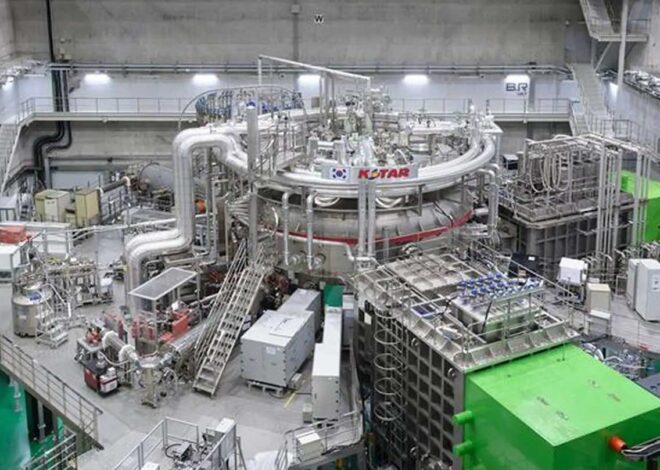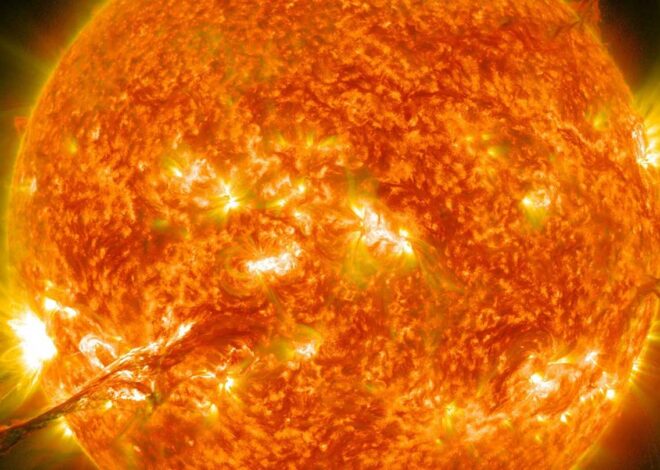
Chandrayaan-3: India’s Mission to Soft Land on the Moon’s South Pole
Chandrayaan-3: India’s Mission to Soft Land on the Moon’s South Pole
Human imagination has always been captured by space exploration, and India has continually attracted attention from throughout the world for its efforts in this area.
India is about to set out on a fantastic trip once more with Chandrayaan-3, a mission aiming to achieve a gentle landing on the mysterious South Pole of the Moon. Chandrayaan-3 will be carried out by the scientifically advanced and unwaveringly determined nation.

This ambitious endeavor serves as a metaphor for humanity’s never-ending quest to understand the workings of the cosmos and India’s technical growth. Chandrayaan-3 is expected to be a ground-breaking accomplishment that has the ability to provide fundamental insights about the lunar landscape and our place in the cosmos as the country gets ready to pen another chapter in its space exploration history.
The Journey:
Chandrayaan-3 was launched on July 14, 2023, at 2:43 PM IST from the Satish Dhawan Space Centre in Sriharikota, India. It was launched by a GSLV Mk III rocket, which is India’s most powerful launch vehicle.
The spacecraft consists of three modules: an orbiter, a lander, and a rover. The orbiter will remain in orbit around the moon for a year, while the lander will attempt to soft land on the moon’s south pole. The rover will be deployed from the lander and will explore the lunar surface.
The propulsion module and Vikram lander separated on August 17, 2023. The Vikram lander is now in a 134 km by 25 km elliptical orbit around the moon. It is scheduled to land on the moon’s south pole on August 23, 2023.

The Landing:
Chandrayaan-3’s forthcoming landing is anticipated to be a complex and challenging procedure that will demonstrate the complicated interaction between technology and accuracy. The challenging objective for the lander is a quick slowdown from an astounding velocity of 1.68 km/s to a complete standstill in under 20 minutes. Three distinct phases, each essential to the mission’s success, will be painstakingly completed in this high-stakes landing operation.
In the first stage, referred to as the “rough braking phase,” the lander will use its primary engines to start a rapid decrease in speed. The lander will skillfully slow down during this phase, going from a stunning velocity of 1.68 km/s to a more manageable 800 m/s. The ensuing phases will emphasise the lander’s remarkable propulsion characteristics thanks to this impressive reduction.
As the lander enters the “fine braking phase,” it will be hovering 800 metres above the lunar surface. The lander will use its attitude control thrusters to steer its fall to just 150 metres above the mysterious landscape of the Moon in a display of complex manoeuvring. This carefully planned fall not only demonstrates Chandrayaan-3’s engineering brilliance but also highlights the mission’s painstaking planning for a soft touchdown.
Last but not least, the dramatic “terminal descent phase” will take place, during which the lander’s precisely engineered landing legs will make touch with the lunar surface. The remarkable journey of Chandrayaan-3 comes to an end during this phase as the spacecraft pulls off the incredible achievement of a soft landing on the South Pole of the Moon. In addition to demonstrating India’s technological prowess, the successful completion of these complex landing phases would pave the path for future celestial endeavours and provide priceless information that will advance our understanding of lunar exploration.
Read This Also: Chandrayaan-3 lander searches for safe landing spot on Moon’s south pole
The Rover
The Pragyaan rover will be deployed after the Chandrayaan-3 lander successfully touches down on the lunar surface, beginning a new phase of exploration. Pragyaan, which was created to be a true marvel of scientific brilliance, is outfitted with a wide variety of cutting-edge tools that are intended to reveal the Moon’s well-kept secrets. A high-resolution camera that allows for detailed visual exploration and a precise spectrometer that will examine the make-up of the lunar regolith are just two of its amazing characteristics.
The rover’s capabilities go beyond observation because it also has a drill that lets it probe the lunar surface. This drilling capacity has the potential to provide priceless samples that could reveal important details about the geological past of the Moon and perhaps even our solar system as a whole. Pragyaan is a ground-breaking asset for the project because of its adaptability and capacity to conduct complex experiments directly on the lunar surface.
Pragyaan’s mobility as it travels around the lunar surface is evidence of its engineering brilliance. The rover, which can go up to 5 kilometres, will be a tireless explorer, exploring unexplored areas and carrying out tests that further our knowledge of the Moon’s creation, evolution, and place in the universe. A magnificent era of lunar exploration has begun with Chandrayaan-3’s deployment of Pragyaan, allowing us to explore the mysteries that have long been veiled in the lunar expanse and advancing our understanding of the universe.

The Significance of the Mission
With a successful soft landing on a celestial planet, Chandrayaan-3, India’s ambitious second lunar exploration mission, will cement its place among the spacefaring nations. India would proudly claim its position as the fourth nation to accomplish the extraordinary achievement of softly touching down on an extraterrestrial realm should this mission be successful. Chandrayaan-3 holds the prospect of revealing important discoveries about the moon’s surface and its fascinating history, beyond just the enormous accomplishment itself.
The scientific value of the mission is immense, providing a unique chance for academics to dive into the mysterious past of the moon. Scientists have the opportunity to find out more about the moon’s geological history, its place in the cosmos, and perhaps even its connections to Earth’s past by closely examining the lunar surface. Thus, this mission offers a priceless opportunity to increase our understanding of the celestial bodies that make up our cosmic neighbourhood.
It’s important to note that Chandrayaan-3 is not only a solo mission; it also embodies a spirit of cooperation and a future-focused outlook. The project not only lays the way for further lunar trips, but it also fosters ambitions for even greater endeavours, such as the bold objective of sending humans to the moon. Chandrayaan-3’s expertise will act as a pillar for developing and perfecting the plans, tools, and safety precautions required for leaving the boundaries of our planet. With Chandrayaan-3, India advances not just its own space research efforts but also the global human endeavour of solving the universe’ mysteries and broadening the frontiers of exploration.
The Excitement and Anxiety
Chandrayaan-3’s upcoming touchdown is a significant turning point for the entire world’s interest in the wonders of space exploration, not just for India. The occasion has sparked a real feeling of wonder about the possibilities it holds, igniting a fiery mixture of excitement and expectation. An undertone of fear can be detected in the midst of this enthusiasm, which is a sign of the landing process’s inherent complexity and difficulties. There is some ambiguity because of how difficult the task is and how many precise manoeuvres must be coordinated. The difference between success and failure in the field of space exploration can be razor-thin, accepting the possibility that even the best-laid plans could run into unforeseen difficulties.
The Indian Space Research Organisation (ISRO) nevertheless radiates a resounding confidence in the mission’s success despite these difficulties. This assurance is not the result of naive optimism, but rather of a history of successful missions, a dedication to meticulous planning, and an unshakable commitment to quality. Chandrayaan-3 has been painstakingly developed, tested, and fine-tuned to negotiate the hurdles of lunar landing, according to ISRO’s track record of overcoming obstacles and achieving ground-breaking outcomes. A trip where the outcome is moulded by a delicate mix of invention, perseverance, and the great unknown, exploration is defined by a blend of excitement, anticipation, and fear surrounding this event.
This mission reflects the human curiosity and tenacity that motivates our inevitable need to explore beyond the boundaries of our planet, and ISRO’s unwavering faith in Chandrayaan-3’s success.
The Future of Space Exploration
The spectacular success of Chandrayaan-3 has the potential to significantly advance India’s developing space programme. This accomplishment would be a ringing testament to India’s prominence on the international arena of space exploration, in addition to the immediate scientific benefits. The successful landing will highlight the country’s outstanding technological prowess and tenacity in addition to enhancing its status as an expert player in the field.
The success of Chandrayaan-3 has effects that go far beyond feelings of patriotism because it has the potential to inspire future generations. The mission’s resounding success would plainly illustrate how creativity, assiduity, and teamwork can overcome obstacles that at first appear insurmountable. Chandrayaan-3 will encourage young people all around the nation to pursue jobs in science, technology, engineering, and mathematics (STEM) by showcasing the amazing achievements that can be made via scientific innovation. In turn, this will encourage the development of a young, talented workforce that will not only advance India’s space programme but also improve the country’s wider technological environment.
Furthermore, Chandrayaan-3’s importance extends beyond the boundaries of Earth because its success will clear the way for more thorough exploration of the moon and other celestial bodies. Future missions can be built on the knowledge gathered from this mission, which will help with the construction of complex instruments, the development of navigational techniques, and the improvement of our comprehension of the vast complexity of space settings. Thus, Chandrayaan-3 serves as a symbol of development, a source of inspiration, and a first step towards a time when India’s strength in space research will continue to transform our perception of the universe.




